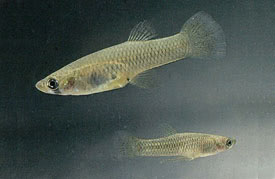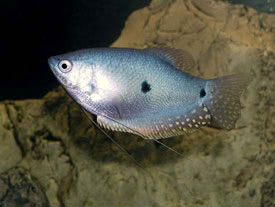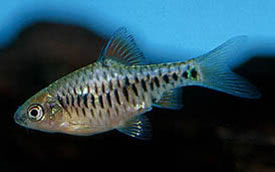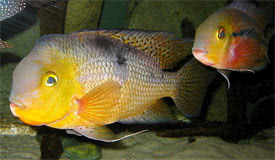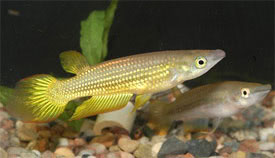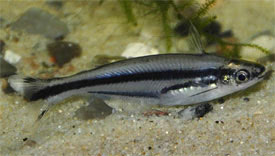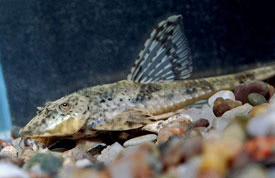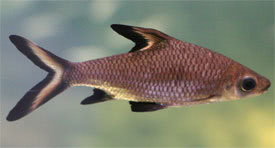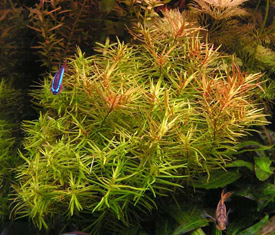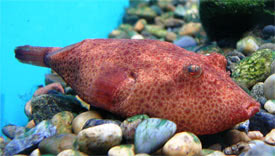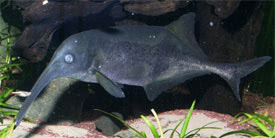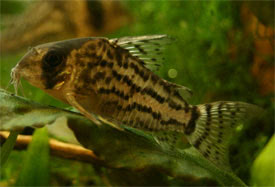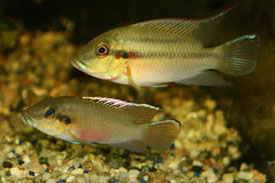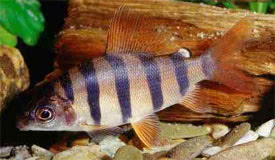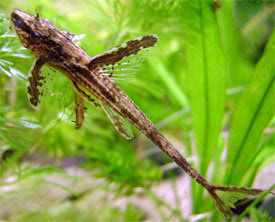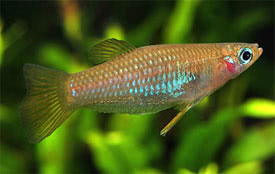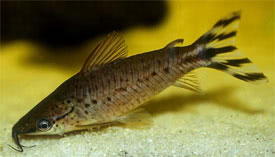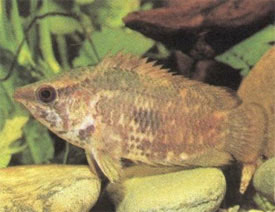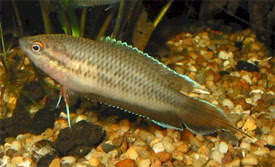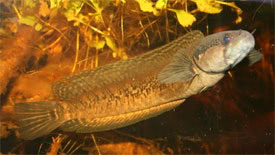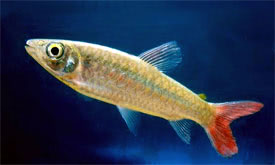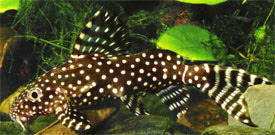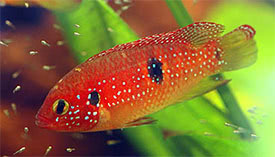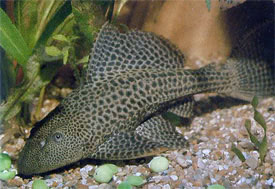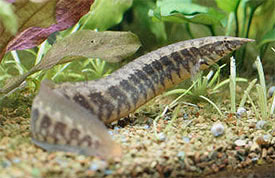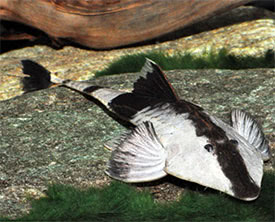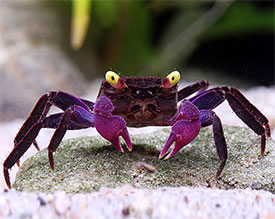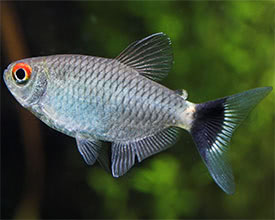
 Magyarul / Hungarian
Magyarul / Hungarian
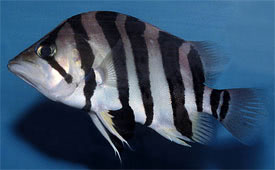
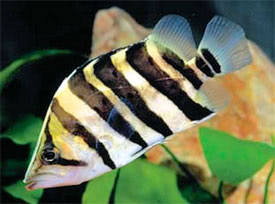
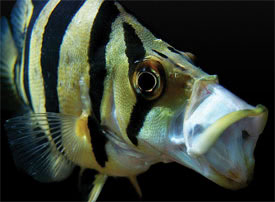
- Scientific name: Datnioides microlepis
- Synonyms: Coius microlepis
- Common name: Indonesian Tiger Fish
- Group: Other fishes
- Habitat: Asia; Thailand, Indonesia, Borneo, Sumatra.
- Size: 45 cm, in aquaria usually only 30 cm
- Biotope: Inhabits in rivers and lakes in areas with dense vegetation and submerged tree roots such as flooded forests. It can live under mildly brackish conditions.
- Social behavior: Quite aggressive towards conspecifics and other similar looking species, but generally peaceful with other large fish. Do not combine with small fish as they may be eaten.
- Diet: Carnivorous; they eat mainly live foods. All types of worms, insects, invertebrates and small fish. They eat frozen foods as well.
- Breeding: Not possible in an aquarium.
- Tank: Minimum 400 litres
- Population: 3-4 fish for 1200 litres
- Decoration: Lots of aquatic plants and roots to provide cover and hiding places. Also a lots of swimming space.
- Temperature: 22-28°C
- pH: 6.5-7.5
- Hardness: 5-20 NK°
- Lifespan: 8-12 years
Description: Indonesian Tiger Fish grows large, and it's also an active species. It’s better keep it as a single specimen. Also it is possible to keep them in a small group of at least 3 or 4 fish to disperse any aggressive behavior. Of course a very large aquarium is needed to keep a small group of these fish. Indonesian Tiger Fish is a high backed fish with lateral compression. The body color is white to yellowish brown with five broad, black vertical bands. The first runs through the eye, while the last marks the caudal penuncle. Specimens from Southeast Asia invariably with five full bars, specimens from Borneo with 6-7 bars, all usually continued across ventral surface of body. They will also attempt to eat any fish that will fit into their mouth. Considering the Indonesian Tiger Fish as a brackish water species is a common mistake. In it’s natural habitat it lives in freshwater, but it can survive under mildly brackish conditions too.
It is very similar to Datnioides pulcher. They can usually be distinguished by the central bar on the body: in D. microlepis this bar continues underneath the ventral surface, whereas in D. pulcher the bar tapers to a point before it reaches the ventral surface. The fish often exhibit stress patterning during long transportation or because poor water conditions, or because aggressive tankmates and lack of hiding places. This pattern can vary from a slight greying of the bars, to an all over dark colouration.
Sexual differences are unknown. Indonesian Tiger Fish have never spawned in a home aquarium.





